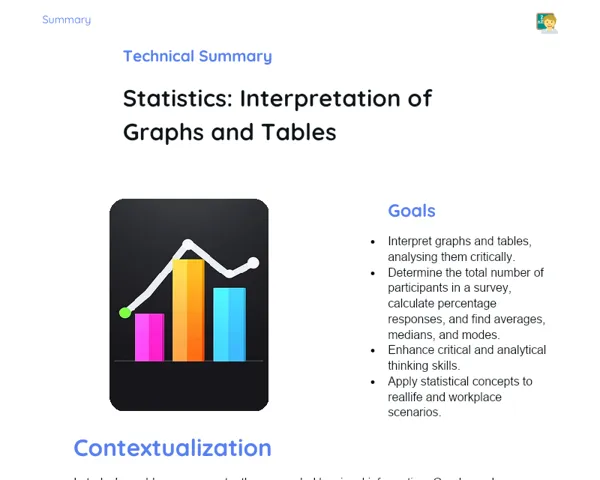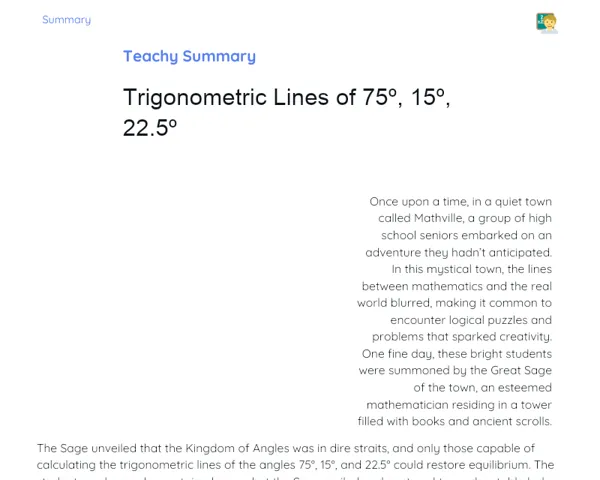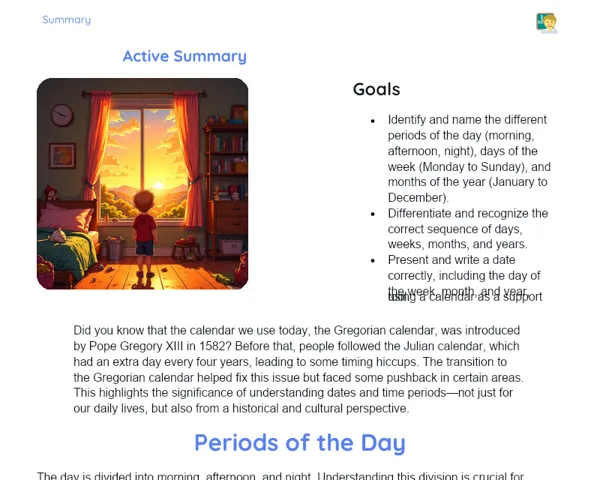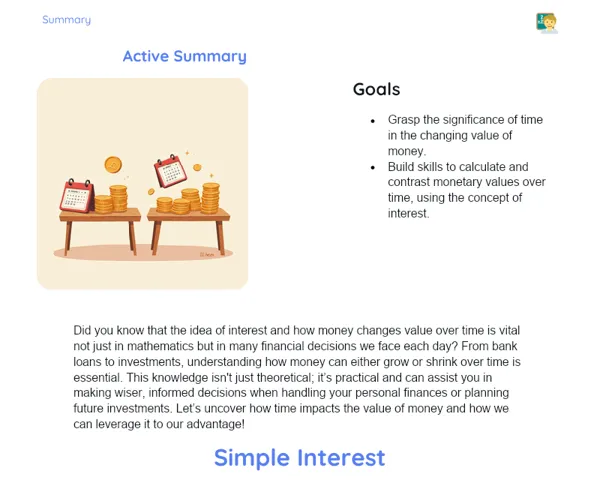Summary Tradisional | Operations: Addition and Subtraction
Contextualization
Addition and subtraction are the building blocks of mathematics and play a crucial role in our daily lives here in South Africa. Whether we're calculating our grocery bills or figuring out how much petrol we need for a trip, these operations are indispensable tools that we often use without even thinking about it. A solid grasp of the mechanics of addition and subtraction not only streamlines our everyday tasks but also lays the groundwork for diving into more complex mathematical concepts as we progress through the education system.
The origins of addition and subtraction trace back thousands of years, with the earliest records found in ancient civilisations like the Babylonians and Egyptians, around 2000 BC. These early societies employed these operations to tackle issues in trade, construction, and astronomy. Recognising the historical significance of these operations underlines their relevance today, showcasing mathematics as a timeless and essential aspect of human progress.
To Remember!
Understanding Addition and Subtraction
Addition involves combining two or more numbers to get a total, represented by the plus sign (+). We encounter addition in our daily activities, from shopping and measuring distances to counting scores in games.
Subtraction, conversely, means taking one number away from another to find the difference, indicated by the minus sign (-). This operation is just as vital in our day-to-day lives. We use subtraction when calculating change after a purchase or figuring out how much of an item is left after using some.
Mastering both operations is crucial, not just for practical problem-solving but also as a foundation for advancing in mathematical subjects like algebra and calculus.
-
Addition combines numbers to find a total.
-
Subtraction removes one number from another to determine the difference.
-
These operations are essential in tackling both practical and advanced mathematics.
Components of Addition
In addition, the numbers being added are known as addends. Each addend contributes to the final total. For instance, in the equation 7 + 5 = 12, 7 and 5 are the addends, while 12 is the total or sum.
Grasping the structure of addition is key to solving problems efficiently. Recognising the addends helps in organising calculations correctly. Additionally, the ability to break down larger numbers into smaller addends can make mental maths easier and aid in solving more complex problems.
An interesting fact is that addition is a commutative operation, meaning it doesn't matter in which order the addends are combined; for example, 3 + 4 is the same as 4 + 3. This property gives us flexibility in problem-solving.
-
Addends are the individual numbers in an addition equation.
-
The total or sum is what you get after adding the addends.
-
Addition is commutative; the order of addends does not affect the result.
Components of Subtraction
In subtraction, the components differ. The number you subtract from is called the minuend, the number being subtracted is the subtrahend, and the result is referred to as the difference. For example, in 10 - 4 = 6, 10 is the minuend, 4 is the subtrahend, and 6 is the difference.
Understanding how subtraction is structured is important for accurate problem-solving. Correctly identifying the minuend and subtrahend helps avoid errors, such as switching the numbers and getting an incorrect answer. Additionally, breaking down numbers can simplify mental calculations, especially for more challenging problems.
Unlike addition, subtraction is not commutative; the order significantly matters. For example, 5 - 3 is not the same as 3 - 5. Furthermore, subtraction is not associative, so how you group the numbers also affects the outcome.
-
Minuend is the starting number in a subtraction.
-
Subtrahend is the amount you are taking away.
-
The difference is what you get after performing the subtraction.
-
Subtraction is neither commutative nor associative.
Properties of Addition and Subtraction
Addition features two main properties: commutativity and associativity. Commutativity means the order of addends doesn’t change the sum; for example, 3 + 4 equals 4 + 3. This is handy as it allows us to rearrange numbers for easier calculations.
The associative property states that how we group the addends does not change their sum; for instance, (2 + 3) + 4 will yield the same result as 2 + (3 + 4). This is valuable for managing more complicated calculations.
In contrast, subtraction does not have these properties. The order of the numbers does change the result – for example, 5 - 3 is not the same as 3 - 5. Also, the grouping of numbers matters in subtraction, indicating that (8 - 3) - 2 will yield a different result than 8 - (3 - 2). Understanding these distinctions is vital for accurately applying addition and subtraction in various calculations.
-
Addition is commutative: the order of addends doesn't change the result.
-
Addition is associative: grouping of addends doesn’t affect the sum.
-
Subtraction is not commutative: the order matters.
-
Subtraction is not associative: the way numbers are grouped affects the outcome.
Key Terms
-
Addition: Combining numbers to get a total.
-
Subtraction: Taking one number from another to find the difference.
-
Addends: Numbers being added together.
-
Total: The sum of the addends.
-
Minuend: The initial number in a subtraction.
-
Subtrahend: The number being subtracted.
-
Difference: The result of the subtraction.
-
Commutativity: Property allowing rearrangement of addends without affecting the sum.
-
Associativity: Property allowing regrouping of addends without changing the sum.
Important Conclusions
Addition and subtraction form the cornerstone of mathematics, having significant applications in daily life—like shopping, calculating travel distances, or dividing bills. By understanding these operations, we can streamline our everyday tasks and prepare ourselves for more advanced mathematical concepts as we continue our learning journey.
In our lesson, we covered the components of addition and subtraction, familiarising ourselves with terms such as addends, total, minuend, subtrahend, and difference. We explored the properties of addition such as commutativity and associativity and noted how subtraction does not share these properties, highlighting the significance of order and grouping in numerical calculations.
This knowledge is not only essential for practical problem-solving but also for developing stronger mathematical skills. I encourage everyone to continue practicing addition and subtraction in various contexts, which will reinforce understanding and proficiency with these foundational operations.
Study Tips
-
Make it a habit to practice addition and subtraction problems regularly to build confidence and skill.
-
Review the examples we've discussed in class and create your own problems based on real-life scenarios to reinforce learning.
-
Utilise various resources, like textbooks and online exercises, to broaden your understanding and discover different techniques for mastering addition and subtraction.



